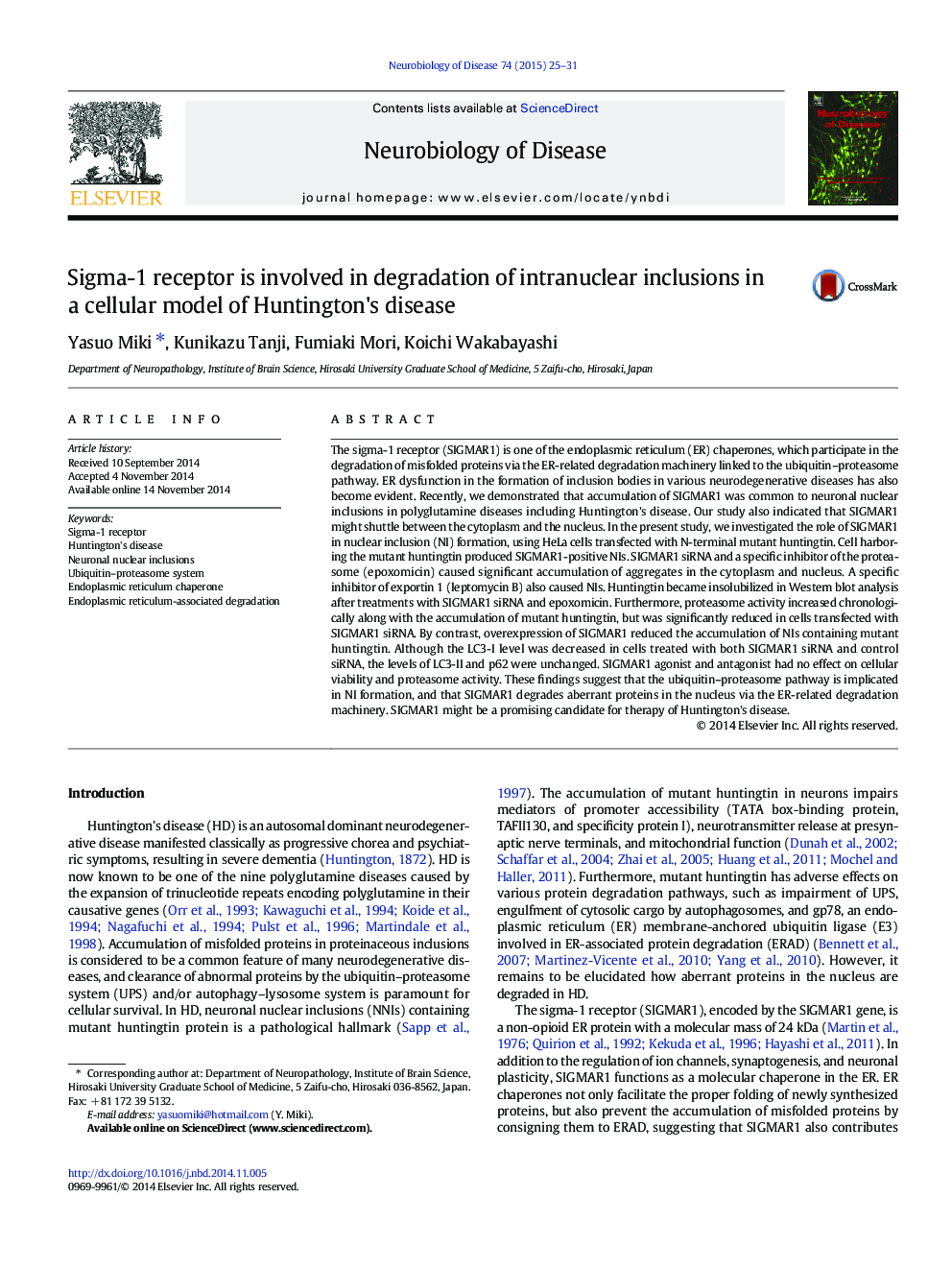| کد مقاله | کد نشریه | سال انتشار | مقاله انگلیسی | نسخه تمام متن |
|---|---|---|---|---|
| 6021744 | 1580649 | 2015 | 7 صفحه PDF | دانلود رایگان |
- SIGMAR1 is involved in clearance of intranuclear abnormal proteins through ERAD.
- The ubiquitin-proteasome system contributes to clearance of intranuclear inclusions.
- SIGMAR1 might be a potential candidate for therapy of Huntington's disease.
The sigma-1 receptor (SIGMAR1) is one of the endoplasmic reticulum (ER) chaperones, which participate in the degradation of misfolded proteins via the ER-related degradation machinery linked to the ubiquitin-proteasome pathway. ER dysfunction in the formation of inclusion bodies in various neurodegenerative diseases has also become evident. Recently, we demonstrated that accumulation of SIGMAR1 was common to neuronal nuclear inclusions in polyglutamine diseases including Huntington's disease. Our study also indicated that SIGMAR1 might shuttle between the cytoplasm and the nucleus. In the present study, we investigated the role of SIGMAR1 in nuclear inclusion (NI) formation, using HeLa cells transfected with N-terminal mutant huntingtin. Cell harboring the mutant huntingtin produced SIGMAR1-positive NIs. SIGMAR1 siRNA and a specific inhibitor of the proteasome (epoxomicin) caused significant accumulation of aggregates in the cytoplasm and nucleus. A specific inhibitor of exportin 1 (leptomycin B) also caused NIs. Huntingtin became insolubilized in Western blot analysis after treatments with SIGMAR1 siRNA and epoxomicin. Furthermore, proteasome activity increased chronologically along with the accumulation of mutant huntingtin, but was significantly reduced in cells transfected with SIGMAR1 siRNA. By contrast, overexpression of SIGMAR1 reduced the accumulation of NIs containing mutant huntingtin. Although the LC3-I level was decreased in cells treated with both SIGMAR1 siRNA and control siRNA, the levels of LC3-II and p62 were unchanged. SIGMAR1 agonist and antagonist had no effect on cellular viability and proteasome activity. These findings suggest that the ubiquitin-proteasome pathway is implicated in NI formation, and that SIGMAR1 degrades aberrant proteins in the nucleus via the ER-related degradation machinery. SIGMAR1 might be a promising candidate for therapy of Huntington's disease.
Journal: Neurobiology of Disease - Volume 74, February 2015, Pages 25-31
